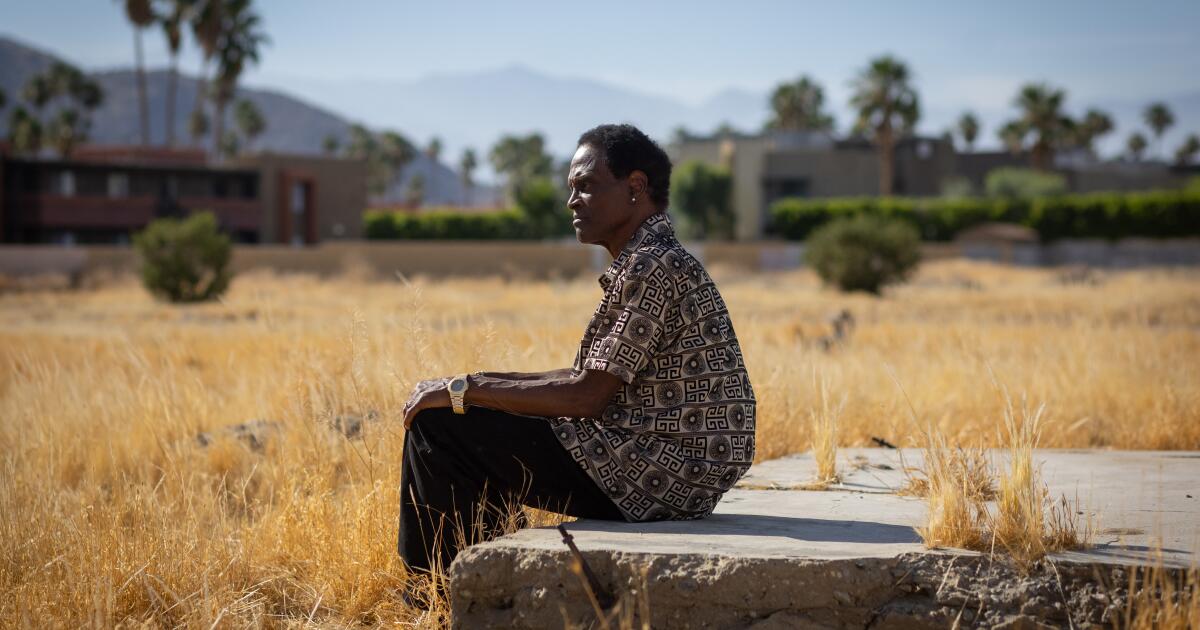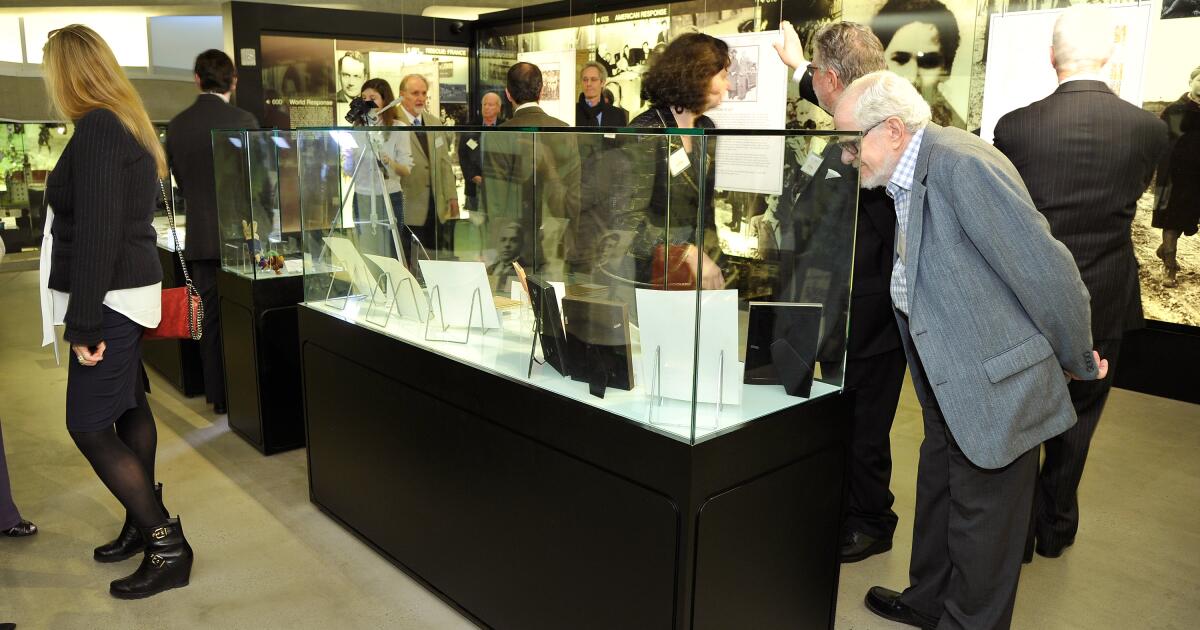Book review
Revenge of the tipping point: overblown stories, superspreaders, and the rise of social engineering
By Malcolm Gladwell
Little, Brown & Co., 368 pages, $32
If you purchase books linked on our site, The Times may earn a commission from Bookshop.org, whose fees support independent bookstores.
It's fair to say that “The Tipping Point” was the turning point in Malcolm Gladwell's career. In 2000, the book catapulted Gladwell, then a staff writer for the New Yorker magazine, to literary stardom. It also launched a new genre of explanatory social science books aimed at a mass audience.
The concept of the tipping point — the moment when everything suddenly changes and a phenomenon becomes an epidemic — was not original to Gladwell, but he enshrined it in our cultural language. “When the paperback edition came out,” he writes in his sequel, “Revenge of the Tipping Point,” “it was part of the zeitgeist.” Over the years, Gladwell, now also a podcast entrepreneur, has published more bestsellers, including “Blink” (2005).“The Outcasts (2008) and ““Talking to strangers” (2019). To his deft synthesis of academic research, he adds journalistic curiosity, a snappy prose style, and a mastery of counterintuitive juxtapositions. He often begins with a puzzle and seeks out case studies and concepts that illuminate it, altering (slightly or radically) our understanding of the world.
“Revenge of the Tipping Point” follows that familiar formula. It remains tempting to question Gladwell’s repeated analogies between disease epidemics and social epidemics, and it’s possible to wonder whether he is cherry-picking examples to support his theories. At times, too, the narrative seems excessively slow and discursive, as it shifts, sometimes abruptly, from one topic to another. Still, Gladwell’s updating of his ideas about tipping points is likely to satisfy hardcore fans and challenge and distract other readers.
“The Revenge of the Tipping Point” cover
(Small, Brown)
The original “Tipping Point” focused on three main concepts that Gladwell argued were essential to understanding social epidemics. He described the Law of the Few, the indispensable role of messengers he called Connectors, Experts, and Salespeople; the Stickiness Factor, which involves the durability of messages; and the Power of Context, that is, the larger picture in which epidemics unfolded.
With “Revenge of the Tipping Point,” he offers “a new set of theories, stories, and arguments about the strange paths that ideas and behavior take in our world.” The title refers to the idea that the tools used to harness social epidemics for good can also have harmful effects.
The book begins with an anonymous case study that many readers will immediately recognize: it involves a congressional hearing involving a company accused of fomenting an epidemic and company witnesses reluctant to accept any blame.
Gladwell then presents puzzles tied to case studies. He begins with an epidemic of bank robberies that swept Los Angeles but not the country, an example of “small-area variation.” That variation, he argues, is a product of what he calls the overall history of a community, a set of cultural and social determinants. To Gladwell’s informed reader, this seems like another interpretation of the power of context.
Gladwell visits a much-studied, high-achievement-obsessed community known in the social science literature as Poplar Grove. In a classic Gladwell twitch, he weaves together a seemingly unrelated story about genetic uniformity and the vulnerability of cheetahs. He argues that these two populations (the city and the cheetahs) are monocultures and therefore lack resilience. That lack, along with a high-pressure environment, helps explain Poplar Grove’s suicide epidemic, he suggests.
The next section of the book deals with social engineering and the rule of the “magic third,” exemplified by the flight of whites from inner-city neighborhoods. Tipping points, Gladwell writes, “can be Deliberately designed.”One example, in Palo Alto: Lawrence Tract, a planned community where whites, blacks and Asians pledged to live together in equal numbers in an attempt to avoid a racial tipping point, whatever the individual cost.
Another case study, highly relevant after last year's U.S. Supreme Court decision striking down race-based affirmative action in college admissions, is the existence of a women's rugby team at Harvard. Gladwell asks why Harvard (one of the defendants in the affirmative action suit) needs such a team and, more broadly, why so many academically mediocre athletes are accepted to the university.
Gladwell is sarcastic in his criticism of Harvard’s longtime dean of admissions, William Fitzsimmons, who has been the university’s dean of admissions for a long time. Fitzsimmons claims that “having a vibrant athletic tradition…makes a huge difference in our ability to attract all types of students.” But Harvard currently admits only a minuscule 3.4 percent of its applicants, Gladwell notes, and “who is this imaginary person…who would turn down an offer from Harvard because the athletic scene is not ‘vibrant’ enough?”
Indeed, Gladwell argues convincingly that Harvard uses sports to maintain its proportion of “overwhelmingly white” students “prepared…to play on the playing fields of America’s country clubs.” His analysis does not make it entirely clear whether the whiteness or wealth of these students is the driving factor in Harvard’s calculations, nor exactly how this predilection interacts with Harvard’s efforts to diversify its student population. But, in Gladwell’s view, “the wrong affirmative action was presented to the court.”
Gladwell also discusses at length the notion of the superspreader event, familiar from the COVID-19 pandemic and exemplified by the February 2020 meeting of the biotech company Biogen in Boston. Here we have a long dissertation on aerosol transmission, saliva and dehydration and, at the end, what seems like a variation on the old idea of the disproportionately powerful messenger.
We then move on to what Gladwell calls zeitgeist narratives, a way of conceptualizing cultural change. He cites the role of the 1978 television miniseries “Holocaust” in transforming the politics of memory, and the sitcom “Will & Grace,” which first aired in 1998, in revolutionizing ideas about gay people and relationships. “Narratives,” Gladwell writes, “are much more volatile than they appear.”
In the final result, Gladwell cleverly applies these concepts to his demystified case study, which seems to straddle the line between social and biological epidemics.
You don’t have to buy everything Gladwell sells to appreciate “Revenge of the Tipping Point”.It turns out that trying to find flaws in their arguments is at least half the fun.
Julia M. Klein is a reporter and cultural critic in Philadelphia.











